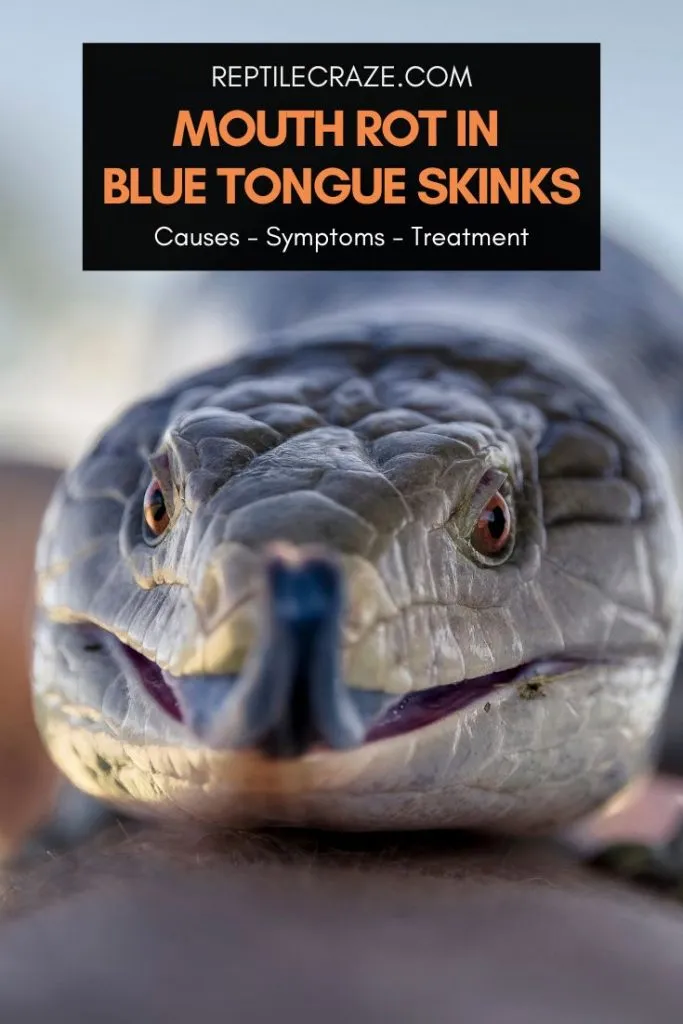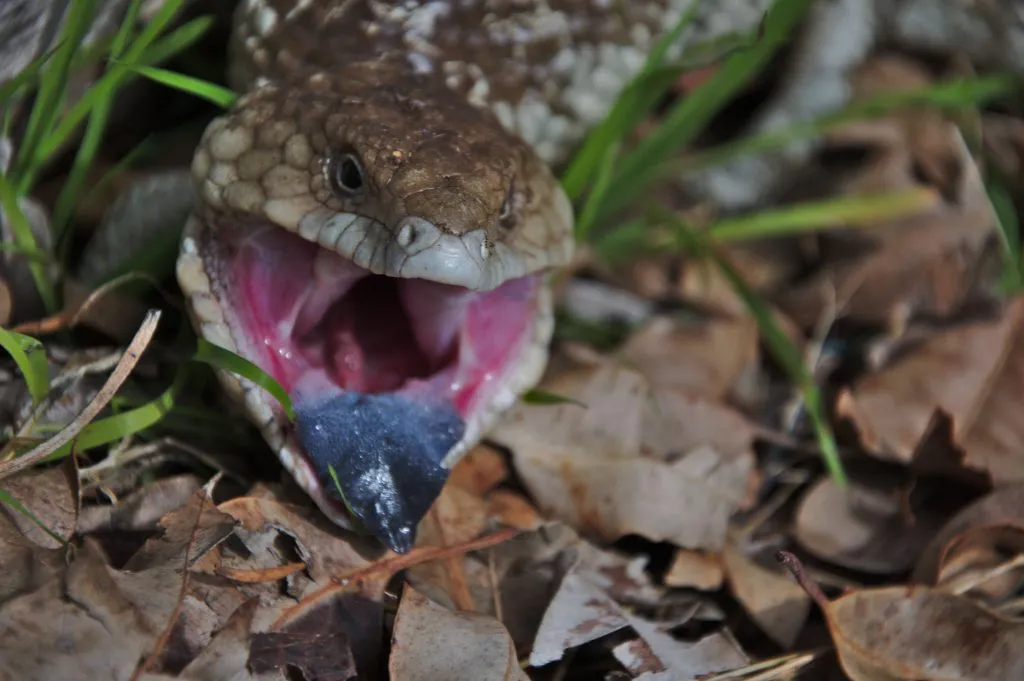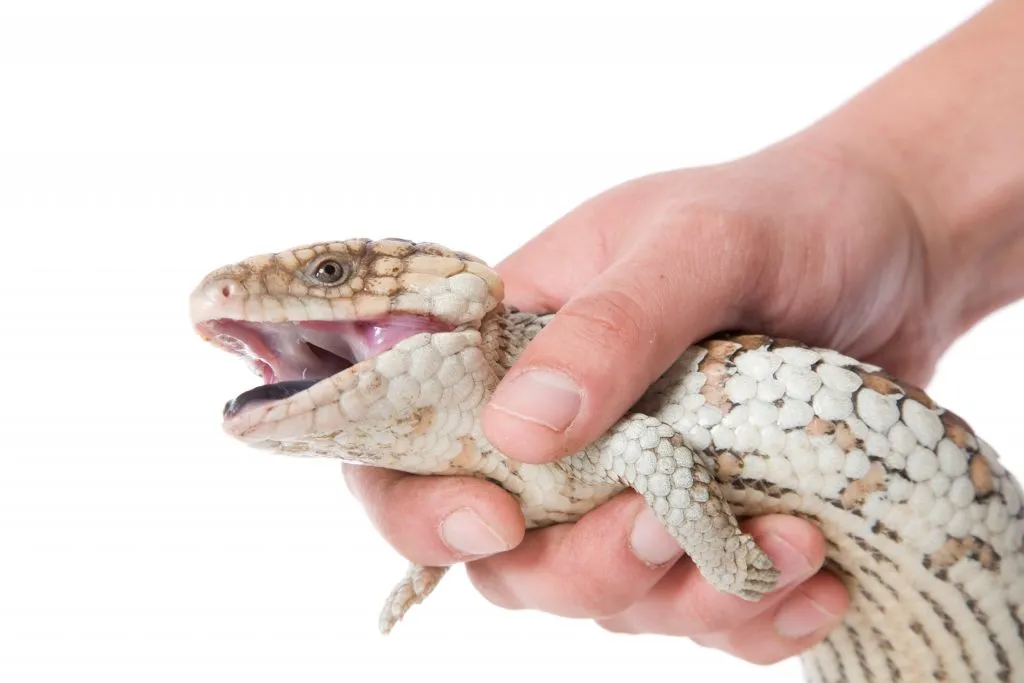
Most owners are shocked when noticing mouth rot in their Blue Tongue Skinks. Even though it is a relatively common bacterial infection in reptiles, it can look horrifying and is always a warning sign. The good news is that you can prevent and successfully treat this condition.
Blue Tongue Skinks sometimes suffer from mouth rot that affects their oral cavities. The disease occurs when your pet’s immune system is compromised by prolonged exposure to stress and untreated parasitic invasion. Poor living conditions and diet can also trigger this health issue.
This article aims to show the most typical reasons why mouth rot appears in Blue Tongue Skinks, its characteristic symptoms, and ways to prevent and treat it.
Table of Contents
Causes of Mouth Rot In Blue Tongue Skinks
Mouth rot (stomatitis, oral inflammation, ulcerative stomatitis, infectious stomatitis, mouth canker) is a painful oral bacterial disease in reptiles. It is relatively common in many lizard types living in captivity, including Blue Tongue Skinks.
Remember that this condition is never a primary disease in those animals. In most cases, it results from an affected immune system caused by rough handling, excessive stress, overcrowding, or poor husbandry.
Prolonged stress
Long-lasting stress suppresses the reptiles’ immune system, making Blue Tongue Skinks susceptible to various diseases. One is mouth rot, which never appears in those living a happy and calm life.
Once your lizard’s immune system is compromised, it will become susceptible to infection, and gram-negative bacteria will cause a problem. The list of the most common causative agents of stomatitis includes:
- Pseudomonas aeruginosa
- Escherichia coli
- Klebsiella pneumoniae
- Salmonella
- Morganella morganii
In some cases, your Blue Tongue Skink can also have an issue with infections caused by mycobacteria, viruses, or fungi. If you neglect your reptile, mouth rot will spread to the lungs and potentially cause respiratory infections, including pneumonia.
Tip: Here is how to know if your skink is happy and healthy.

Improper diet
The only way your Blue Tongue Skink can be prosperous and healthy is to offer a proper and nutritious diet. One of the most significant issues is vitamin deficiency, particularly a lack of vitamin C.
Your reptile also needs enough minerals. For instance, it requires calcium and phosphorus in a 2: 1 ratio. Sometimes, it will be necessary to add supplements to boost its immune system. However, you should be careful with preparations containing D vitamin since it may cause toxicity in Blue Tongue Skinks.
Inadequate husbandry
A peaceful and comfortable environment is crucial in mouth rot prevention. Your Blue Tongue Skink requires the following:
Tank size
A terrarium big enough to provide effortless and unhindered movement. The best option is to provide at least two times bigger space for your pet than its body size.
Temperature, light, and humidity
It is vital to provide 60 to 80% humidity level and UVB lighting during the day.
The adequate temperature should range from at least 75 F (24 C) at the cooler end to max 100 F (38 C) at the basking area. Remember that your reptile is an ectotherm and external temperature directly affects its immune system.
| Feature | Value |
| Light | UVB lighting during the day |
| Temperature | 75 to 82 F (24 – 28 C) at the cooler end 90 to 100 F (32 – 38 C) at the basking area |
| Humidity | 60% to 80% |
Substrate
A Blue Tongue Skink requires at least 4 inches (10 cm) deep bedding to enable burrowing when needed.
Accessories
It is crucial to add proper gadgets inside the
Bad maintenance
Once you adopt your Blue Tongue Skink, you should be prepared to keep its
- Daily poop removal
- Regular substrate cleaning
- Washing bowls and accessories once a week
- Cleaning the entire
tank at least once a month
Otherwise, your reptile will be stressed and susceptible to diseases, primarily mouth rot.
External parasites
Your Blue Tongue Skink may suffer from external parasites, like mites and ticks. Such an infestation compromises its immune system and can cause mouth rot occurrence. Therefore, keeping the
Injury
Severe wounds on your Blue Tongue Skink’s body and injuries in the head area will most likely lead to mouth rot. Therefore, you should take it to the vet as soon as you notice your pet hurts itself.
Genetics
In rare cases, Blue Tongue Skinks can inherit a tendency to particular health issues from their ancestors. For instance, if its parents suffered from this disease, there is a real chance for your pet to have the same problem.

Symptoms of Mouth Rot In Blue Tongue Skinks
You will quickly determine that your Blue Tongue Skink has a problem with mouth rot since symptoms are characteristic and easily recognizable. Once the disease occurs, you will notice the following:
- Excessive mucus and foul-smelling from the mouth
- Yellowish cheesy secretion in mouth, lips, and teeth
- Swollen and red mouth and gums
- Damaged mouth scales
- Difficulty in mouth closing
- Lack of appetite and weight loss (More on that here)
- Lethargy and weakness
- Rotting mouth and felled-out teeth in advanced cases
- Pneumonia as a result of bacteria aspiration
- The skink might have its mouth open all the time
Note: Are you afraid that your blue tongue skink might die and you don’t know what to do? Read our article on that here!
Blue Tongue Skink Mouth Rot Prevention and Treatment
Prevention is crucial in this case and includes:
- A proper and nutritious diet
- Adequate living conditions, including temperature, humidity, and lighting
- Regular
tank cleaning
The best thing to do when noticing mouth rot in your Blue Tongue Skink is to take it to the vet. Since this condition often leads to systemic diseases, treatment with topical antiseptics and antibiotics must be timely and aggressive.
Be prepared that treatment typically lasts from three weeks to several months, depending on the disease progression level. In severe cases, the only option is surgical debridement, which includes removing necrotic tissue.
- Enchi Ball Python: A Unique and Stunning Morph of Python regius - March 27, 2025
- Emerald Tree Monitor: The Enigmatic Green Guardian of the Rainforest - March 26, 2025
- The Egyptian Cobra (Naja haje): A Fascinating Serpent - March 25, 2025
